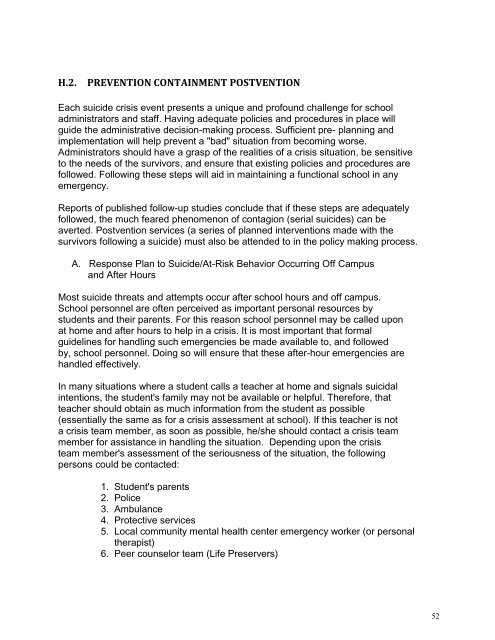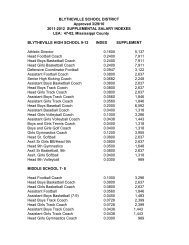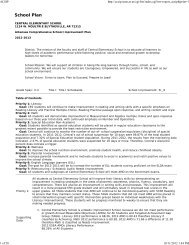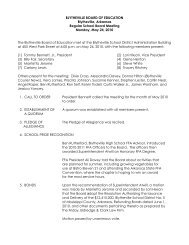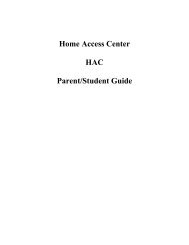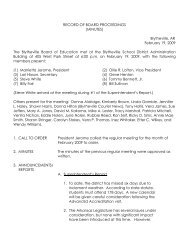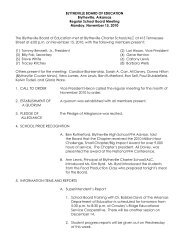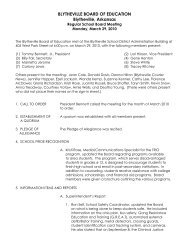District-Wide Safe Schools and Crisis Plan - Blytheville Public Schools
District-Wide Safe Schools and Crisis Plan - Blytheville Public Schools
District-Wide Safe Schools and Crisis Plan - Blytheville Public Schools
You also want an ePaper? Increase the reach of your titles
YUMPU automatically turns print PDFs into web optimized ePapers that Google loves.
H.2. PREVENTION CONTAINMENT POSTVENTION<br />
Each suicide crisis event presents a unique <strong>and</strong> profound challenge for school<br />
administrators <strong>and</strong> staff. Having adequate policies <strong>and</strong> procedures in place will<br />
guide the administrative decision-making process. Sufficient pre- planning <strong>and</strong><br />
implementation will help prevent a "bad" situation from becoming worse.<br />
Administrators should have a grasp of the realities of a crisis situation, be sensitive<br />
to the needs of the survivors, <strong>and</strong> ensure that existing policies <strong>and</strong> procedures are<br />
followed. Following these steps will aid in maintaining a functional school in any<br />
emergency.<br />
Reports of published follow-up studies conclude that if these steps are adequately<br />
followed, the much feared phenomenon of contagion (serial suicides) can be<br />
averted. Postvention services (a series of planned interventions made with the<br />
survivors following a suicide) must also be attended to in the policy making process.<br />
A. Response <strong>Plan</strong> to Suicide/At-Risk Behavior Occurring Off Campus<br />
<strong>and</strong> After Hours<br />
Most suicide threats <strong>and</strong> attempts occur after school hours <strong>and</strong> off campus.<br />
School personnel are often perceived as important personal resources by<br />
students <strong>and</strong> their parents. For this reason school personnel may be called upon<br />
at home <strong>and</strong> after hours to help in a crisis. It is most important that formal<br />
guidelines for h<strong>and</strong>ling such emergencies be made available to, <strong>and</strong> followed<br />
by, school personnel. Doing so will ensure that these after-hour emergencies are<br />
h<strong>and</strong>led effectively.<br />
In many situations where a student calls a teacher at home <strong>and</strong> signals suicidal<br />
intentions, the student's family may not be available or helpful. Therefore, that<br />
teacher should obtain as much information from the student as possible<br />
(essentially the same as for a crisis assessment at school). If this teacher is not<br />
a crisis team member, as soon as possible, he/she should contact a crisis team<br />
member for assistance in h<strong>and</strong>ling the situation. Depending upon the crisis<br />
team member's assessment of the seriousness of the situation, the following<br />
persons could be contacted:<br />
1. Student's parents<br />
2. Police<br />
3. Ambulance<br />
4. Protective services<br />
5. Local community mental health center emergency worker (or personal<br />
therapist)<br />
6. Peer counselor team (Life Preservers)<br />
52


